Nikon AF-S Nikkor 50mm 1: 1.4G SWM (abbreviated Nikon 50 / 1.4G) is one of Nikon's fastest autofocus lenses. It's classic half a ruble (a lens with a focal length of 50 mm), which is suitable for a huge number of photo tasks, in particular, such a lens can be shot in low light, used as a standard fixed lens on Nikon FX cameras, the lens is suitable for portrait and artistic shooting. With huge aperture F / 1.4 you can create and enjoy the result.
All Nikon 50-58 / 1.4 / 1.2 autofocus lenses
- Nikon 50mm 1: 1.4 AF Nikkor (first version, MK I) - the lens was produced only in Japan from 1986 to 1991
- Nikon 50mm 1: 1.4 AF Nikkor (second version, MK II, also known as the 'N', or the 'NEW' version) - the lens was only available in Japan from 1991 to 1995
- Nikon 50mm 1: 1.4D AF Nikkor (third version, MKIIIbetter known as 'D'-version) - the lens is available from 1995 to this day. There are two subversions that are no different.
- Nikon 50mm 1: 1.4G AF-S Nikkor SWM (fourth version, MKIVbetter known as 'G' version) - the lens is only available in China from 2008 to this day.
- Nikon N AF-S Nikkor 58mm 1: 1.4G Nano Crystal Coat SWM Aspherical (version better known as'58/1.4') - the lens is only available in Japan from 2013 to this day.
- Nikon Nikkor Z 58mm 1: 0.95 S Noct - The lens is available from 2019 to this day. Premium Lens for Mirrorless Cameras Nikon Z... It does not have automatic focus, but has a record aperture. Complex optical design with 17 elements in 10 groups, with 4 ED elements and 3 aspherical elements.
- Nikon Nikkor Z 50 / 1.2 S - The lens has been produced from 2020 to the present day. Professional S-line lens for mirrorless cameras Nikon Z... Complex optical design with 17 elements in 15 groups, with 2 ED elements and 3 aspherical elements
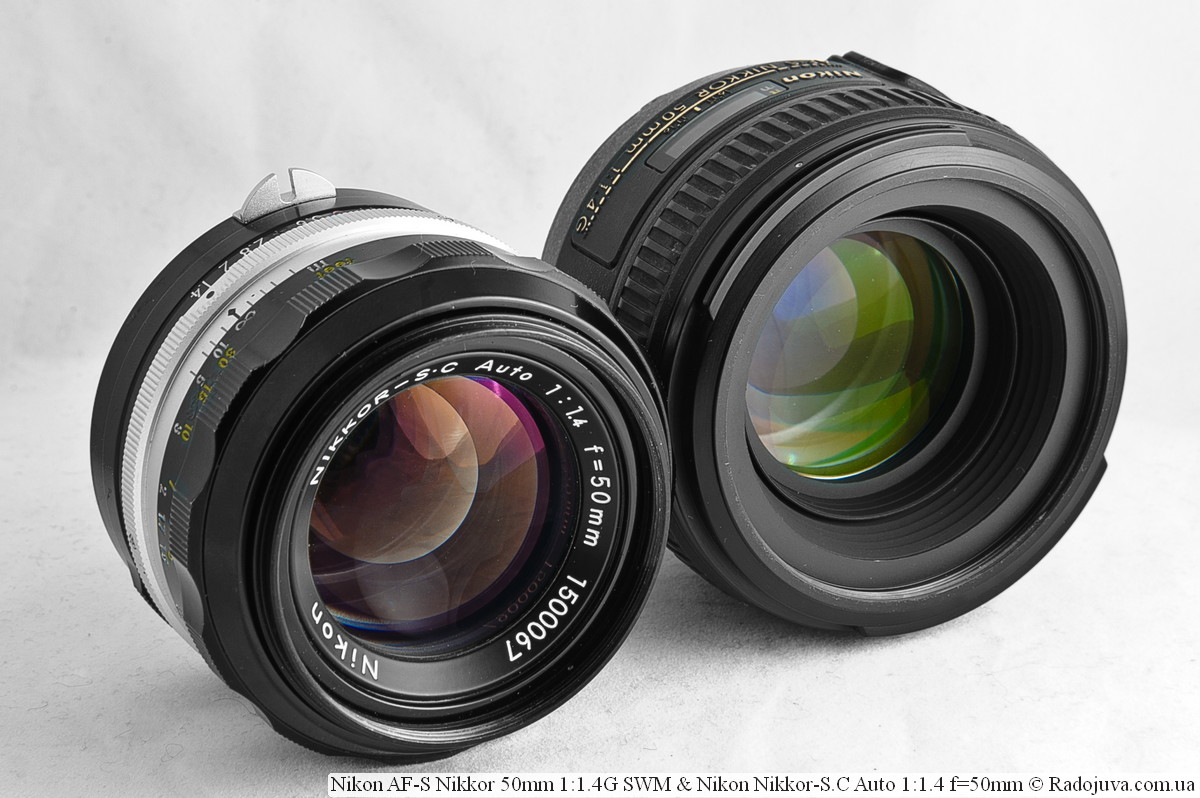
Nikon Nikkor-SC Auto 1: 1.4 f = 50mm and Nikon AF-S Nikkor 50mm 1: 1.4G SWM
Main technical characteristics of Nikon AF-S Nikkor 50mm 1: 1.4G SWM:
| Review Instance Name | Nikon AF-S Nikkor 50mm 1: 1.4G SWM 309536 |
| Basic properties |
|
| Front Filter Diameter | 58 mm, plastic thread for filters |
| Focal length | 50 mm, EGF for Nikon DX cameras is 75 mm, EGF for Nikon CX cameras is 135 mm |
| Zoom ratio | 1 X (this is a fixed lens, it does not have a zoom) |
| Designed by | for digital and film cameras |
| Number of aperture blades | 9 pieces, petals rounded |
| Tags | focusing distance in meters and feet, depth of field tags for F / 11 and F / 16 values, bayonet mount tag and lens hood attachment / fixation |
| Diaphragm | F / 1.4 to F / 16, without aperture ring. |
| MDF | 0.45 m, maximum magnification ratio 1: 6.7 |
| The weight | 280 g |
| Optical design | 8 elements in 7 groups. The lens does not use special optical elements in its design.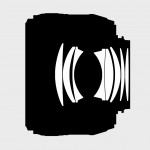 The image of the circuit is clickable. The image of the circuit is clickable. |
| Lens hood | Replaceable Nikon HB-47 plastic lens hood, lenses use the same lens hood Nikon AF-S Nikkor 50mm 1: 1.8G SWM Aspherical and Nikon AF-S Nikkor 50mm 1: 1.8G SWM Aspherical Special Edition |
| Manufacturer country | MADE IN CHINA |
| Period | From September 2008 -> |
| Instruction | View -> |
| Price |
The Nikon 50 / 1.4G lens will work great on any Nikon DSLR camera. Among fifty brothersthis Nikon 50 / 1.4G is the best. At one time, he became a replacement for his older brother Nikon 50mm f / 1.4D AF Nikkor... In fact, the Nikon 50 / 1.4G was introduced back in 2008, and I think that soon we will see a fifty-kopeck piece (50mm lens) from Nikon with more serious performance.
Addition: my prediction came true, and in addition to the 'non-professional' Nikon 50 / 1.4G Nikon has released a 'professional' about fifty kopecks Nikon N AF-S Nikkor 58mm 1: 1.4G SWM... Still, it's a shame that Nikon doesn't have professional fifty dollars. At the same time, Canon has two of them - Canon Lens EF 50mm 1: 1.2 L USM and Canon Lens EF 50mm 1: 1.0 L USM.
Focus on Nikon 50 / 1.4G
The Nikon 50 / 1.4G lens will focus on any modern DSLR camera. If you found your camera in genealogy nameplatethen you can rest assured that the Nikon 50 / 1.4G will work great with it. The Nikon 50 / 1.4G has a built-in focusing motor, as indicated by the AF-S designation. When focusing, the lens practically does not make noise, a special Nikon SWM (Silent Wave Motor) ultrasonic motor helps it. After two years of using my Nikon 50mm 1: 1.8D AF Nikkor (MKIII)which makes a lot of noise when focusing, using the new Nikon 50 / 1.4G is a pleasure.
When focusing, the front lens group moves in the middle of the frame of the housing. I can’t say that the lens has internal focus. But when focusing, the lens does not change its size, and the filter is wound on a fixed external part of the lens, which does not rotate when focusing. This type of focusing can also be found in Nikon 50mm f / 1.8G AF-S Nikkor. The minimum focusing distance is 45cm.
In focus mode 'M / A'Automatic focusing with manual focus priority is available. This means that in autofocus mode, the focus can be manually adjusted immediately. The 'M / A' mode is very useful, for example for creating focus trap effect... In 'M' mode, only manual focus is available. The focusing ring is rubberized.
Focus Speed
Nikon 50 / 1.4G one of the lowest fokiroki speeds among all fifty dollars Nikon Nikkor. Focus speed is average. The rest fifty kopecks Nikkon Nikkor, even the oldest Nikon 50mm 1: 1.8 AF Nikkor MKIoutperform the focusing speed of the Nikon 50mm F1.4G. Of course, to say that a low speed will not be right, but I would like a faster reaction of the lens for that kind of money.
Attention! Very often they write that the lens is very fast. This term is applied not so much to the focusing speed, but more to the description of the lens aperture at which shutter is very fast, decreasing the shutter speed. The confusion came from the English Fast Lens (fast "fast" lens).
The focus ring is rubberized, in the active position it rotates as much as 180 degrees. Due to the fact that the lens is quite chubby, such a move of the focusing ring is quite enough for comfortable work with manual focusing. During auto focus, the ring remains stationary. In manual focus mode, when the ring reaches its extreme positions, it does not rest, but continues to rotate, slipping, like on many native Nikon lenses.
There is a window on the lens with a scale for focusing distances and a depth of field scale. My Nikon 50mm F1.4G misses focus very rarely, even on F1.4.
Iris control
The lens does not have an aperture control ring, since it is a G-type lens. This fifty dollars is very large aperture F / 1.4, this allows you to achieve a very small depth of field, reduce shutter speed and without raising ISO. This lens is very simple take off... The lens has a 9-blade diaphragm, which is a good indicator. The petals are rounded and give a nice smooth bokeh without nuts or other artifacts.
Compatible with FX and DX cameras
The lens will work perfectly on Nikon FX full-frame cameras. On Nikon DX cameras, due to crop factor, EGF lens will be 75mm. This allows the Nikon AF-S 50mm F/1.4G to be used as a portrait lens on DX cameras without any problems. Rumor has it that Nikon AF-S 50mm F / 1.4G is the best portrait lens for crop, I personally like mine much more for crop portrait Nikon 85mm F / 1.8D AF Nikkor.
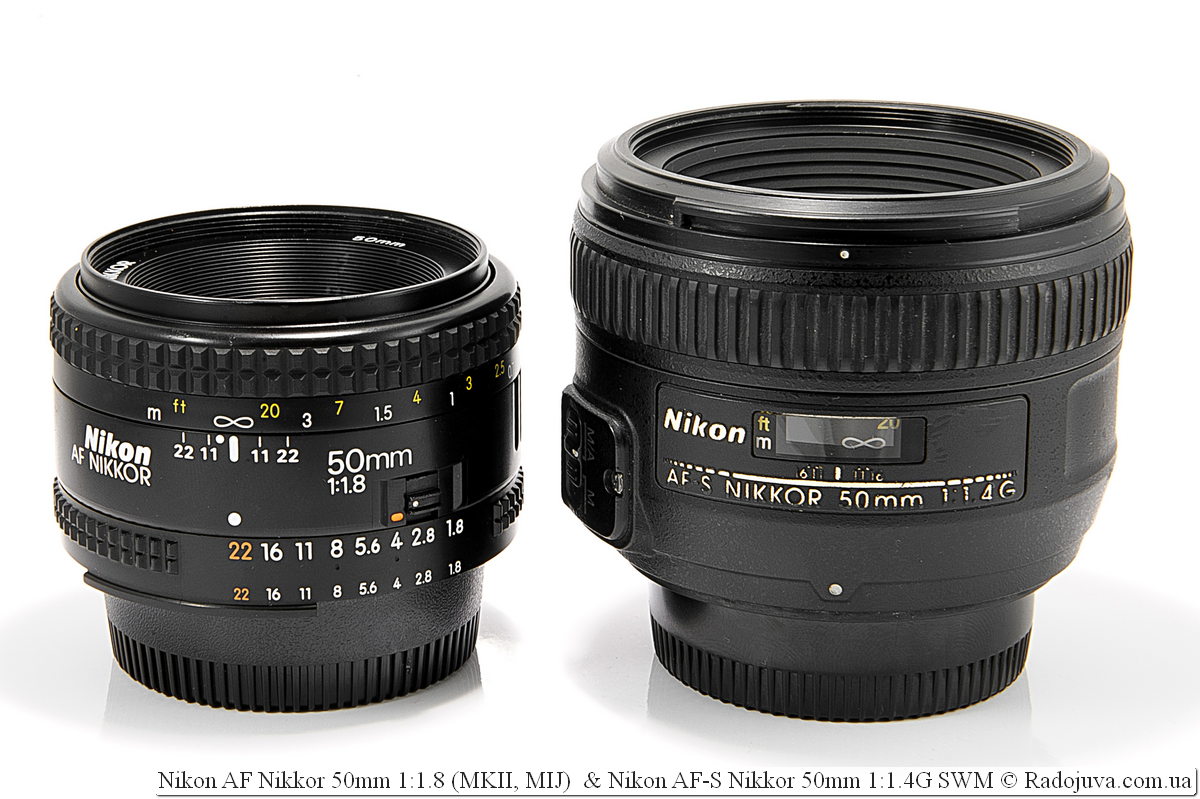
Nikon AF Nikkor 50mm 1: 1.8 (MKII, MIJ version) and Nikon Nikkor 50mm f / 1.4g
Diameter of filter and hood
The lens has a filter diameter of 58 mm. The lens comes with a wonderful hood and pouch bag. The hood can be installed backwards, in this position it is easy to carry on the lens and the hood does not take up extra space in the case.
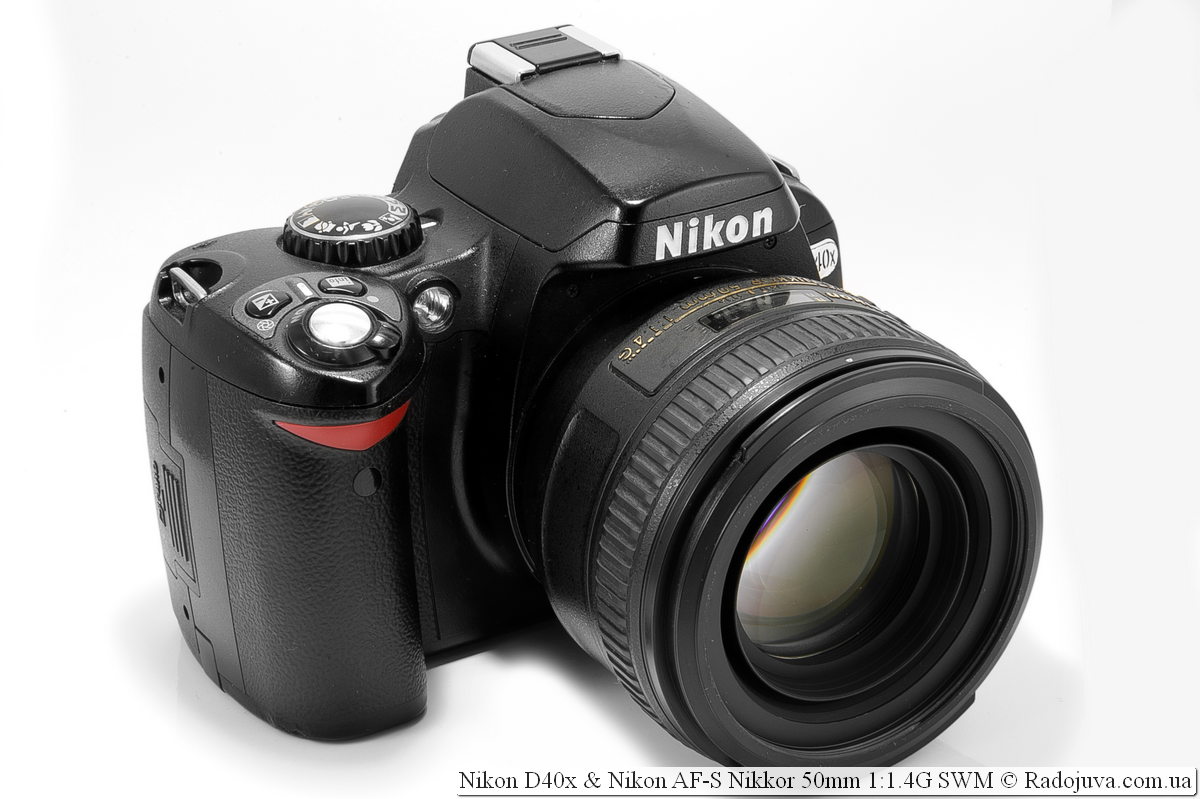
Nikon Nikkor 50mm f / 1.4g on camera Nikon D40x
Nikon 50mm F1.4G Image Quality
The lens, as expected, showed an excellent picture and optical characteristics. The main problem of the Nikon 50mm F1.4G is HA on apertures F1.4-F2.0. The most interesting thing is that HA disappear already at F2.0 - which is a very good indicator. Units have a fully working aperture of F2.0, for example Nikon 50mm F1.2 MF. The lens produces the best image quality at apertures within F2.0-F8.0. Up to F2.0, the lens is inherent HA. After F8.0, diffraction takes effect. About the sharpness: Nikon 50mm F1.4G on F1.4 gives the image is already quite sharp, due to aberrations there is a light software effect. On F1.4, you can make high-quality portraits where strong sharpness of the lens is not always a necessity. Lens gives slightly warm image. The lens provides good contrast. On my cropped camera, vignetting disappears already at F2.8, on F1.4 the vignetting is slightly noticeable. I do not bother with vignetting, it is easy to fix it in the editor. The lens normally tolerates side and back light. A strong drawback in the image of a lens of this class is a slight barrel-shaped distortion (distorting the geometry of the image). Many fifty dollars have much less distortion or do not have it at all. On crop, distortion is barely noticeable. The bokeh of the lens deserves special attention. The lens gives a very nice, even bokeh. Even on closed apertures, discs in the blur zone have a regular round shape. Very funny, but on F1.4, the discs in the blur zone are oval and create twisted bokeh. Generally: high image quality.
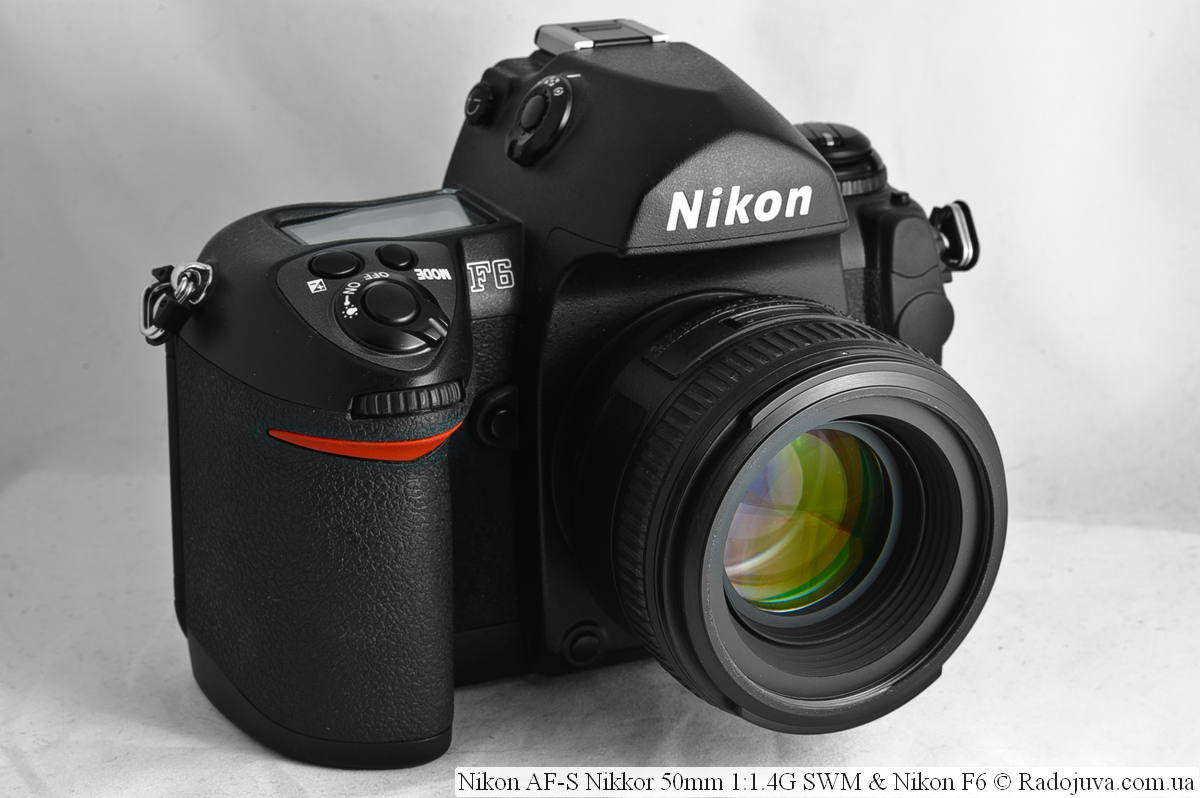
Nikon AF-S Nikkor 50mm 1: 1.4G SWM on a film TOP camera Nikon F6
Sample Photos on Nikon D40 (APS-C, DX)
All photos in the gallery below were taken on Nikon D40. I specifically filmed on Nikon D40to show that even on the simplest DSLR, the lens Nikon 50mm F1.4G works great and with it you can achieve a good result.
Sample Photos on Nikon D80 (APS-C, DX)
All photos in the gallery below were taken on Nikon D80. All photos without treatment... RAW -> JPEG Q80%. Reduced size to 1600 * 1200 and printed data from EXIF.
Sample Photos on Nikon D3200 (APS-C, DX)
All photos in the gallery below were taken on Nikon D3200. All photos without treatment... RAW -> JPEG Q80%. Reduced size to 1600 * 1200 and printed data from EXIF.
RAW source files ('.NEF') can be download from this link (28 files, 350 MB).
More examples of photos can be found on my blog here и here.
Personal experience using
I have a lens Nikon 50mm F1.4G I liked it with my picture (image quality). I often work with optics that only support manual focusing, because the average focusing speed is Nikon 50mm F1.4G for me it doesn’t matter at all. The lens in the hands is quite weighty, but its outer plastic part is felt. And the inscription Made in China is not very credible. I used two years with a tail Nikon 50mm f / 1.8D AF Nikkor after which I switched to Nikon AF-S 50mm 1: 1.4G and I have no regrets about it. In general, if you need a fix after a whale lens, then Nikon 50mm f / 1.8D AF Nikkor or Nikon 50mm f / 1.8G AF-S Nikkor will be the best option. Usually aperture F / 1.4 is rarely required and is quite difficult to work with. F / 1.4 is often taken by professionals who know exactly what they need. My copy was out of order in a light collision from the limousine seat. The focusing motor broke down, the repair cost $ 150, after 3 months the motor broke down again during a long shooting on one of the frames. I sold this lens after repairs. A year later, I bought a new one, then sold it again. Then I bought the same lens again. But somehow this lens did not take root for me.
You can read more information about other autofocus fifty dollars here... In addition, there is also an analogue of Nikon AF-S 50mm 1: 1.4G from a third-party manufacturer - Sigma 50mm 1: 1.4 DG HSM EX.
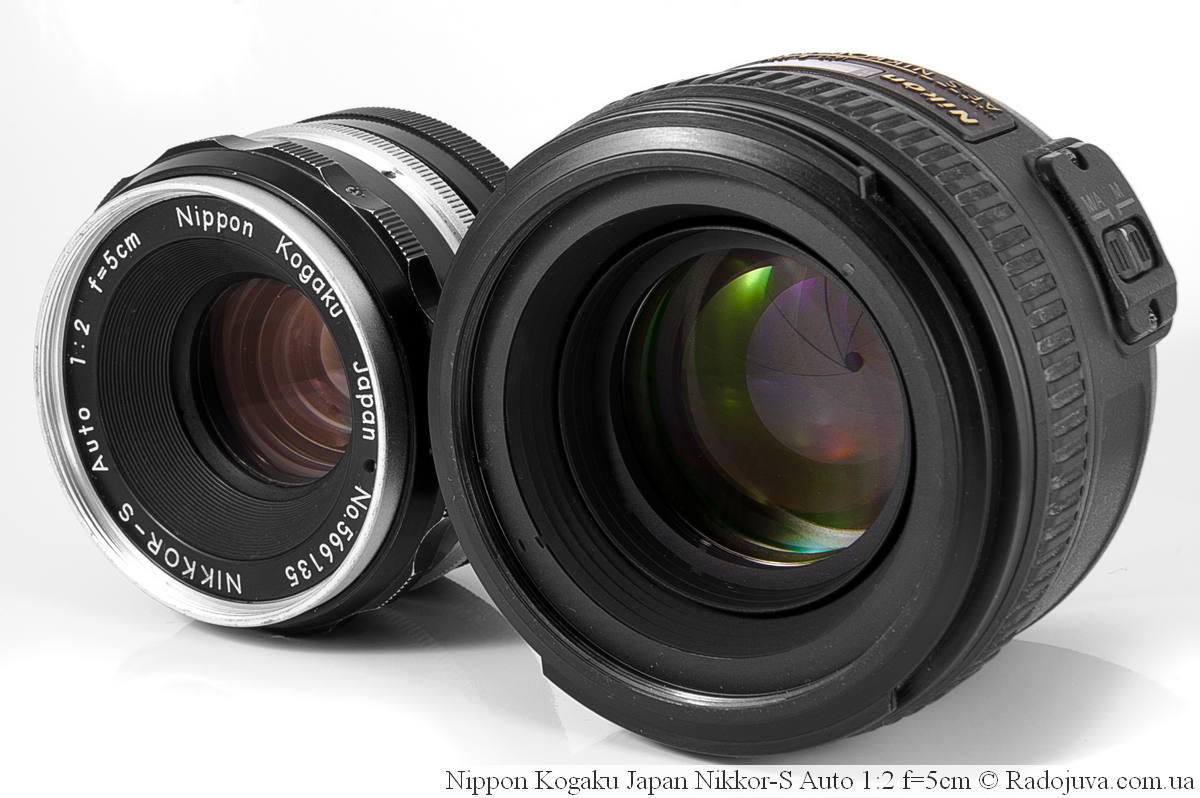
The oldest mirrored fifty dollar - Nippon Kogaku Japan Nikkor-S Auto 1: 2 f = 5cm and TOP Nikon AF-S Nikkor 50mm 1: 1.4G SWM
You can see the real prices for the lens in online stores here, or in the price block below:
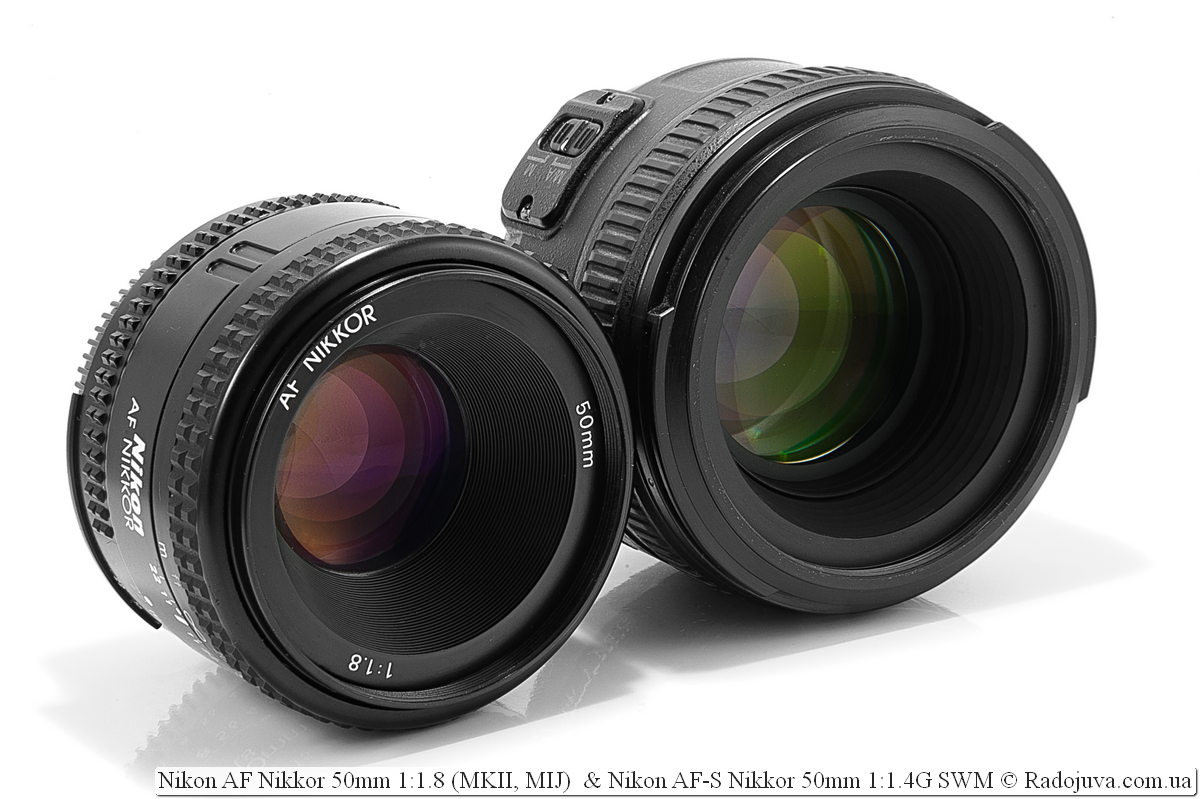
Nikon AF Nikkor 50mm 1: 1.8 (MKII, MIJ version) and Nikon Nikkor 50mm f / 1.4g
Comments on this post do not require registration. Anyone can leave a comment. Many different photographic equipment can be found on AliExpress.
Video review
You can watch the video review here (on my new YouTube channel) or in the box below. Many thanks to Vladimir Morgunov for helping create the video review.
Conclusions:
Nikon 50mm F1.4G - a wonderful lens. Has few shortcomings. It is the best Nikon Nikkor fifty. Recommend.
Material prepared Arkady Shapoval. Training/Consultations | Youtube | Facebook | Instagram | Twitter | Telegram

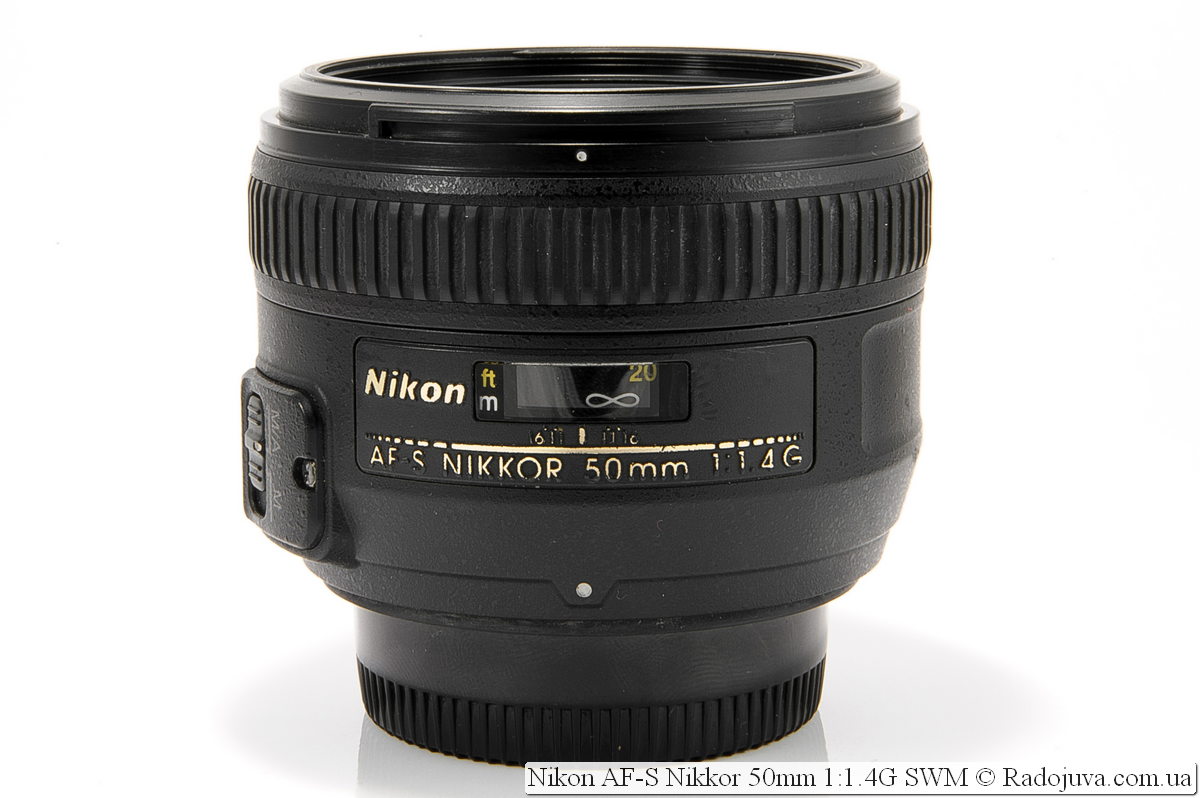
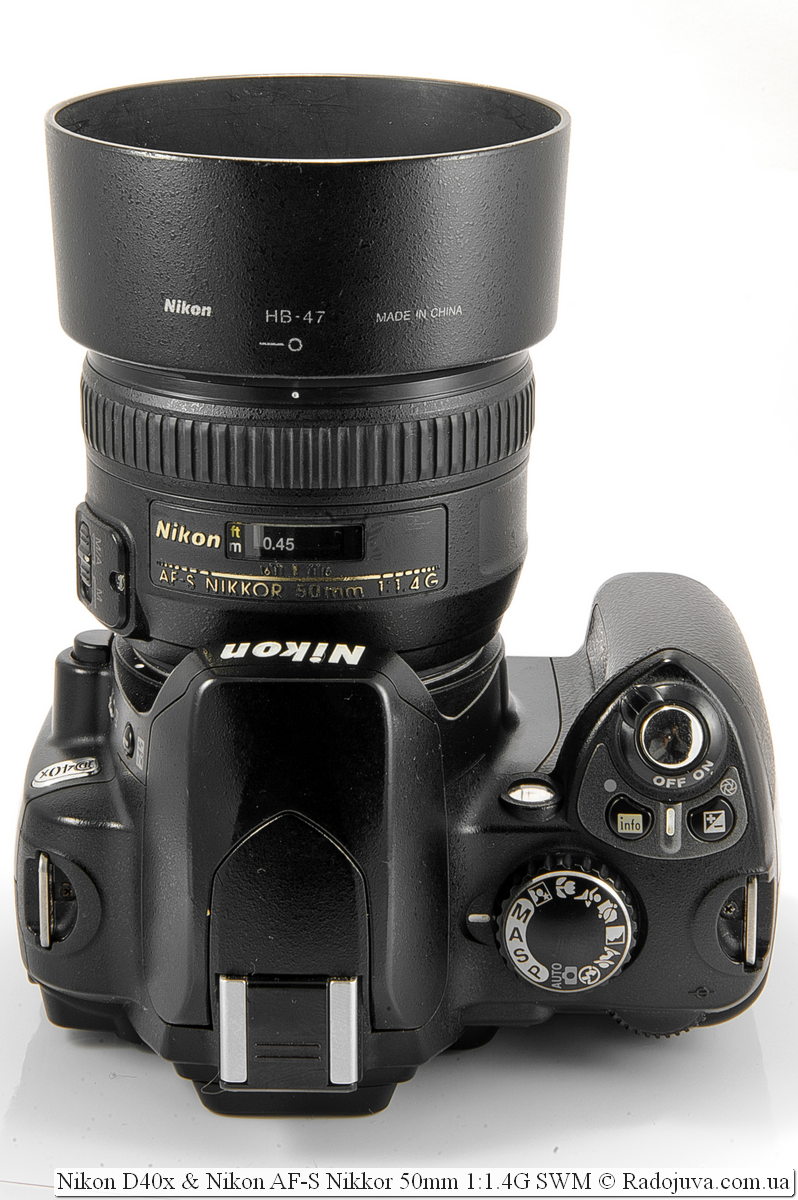
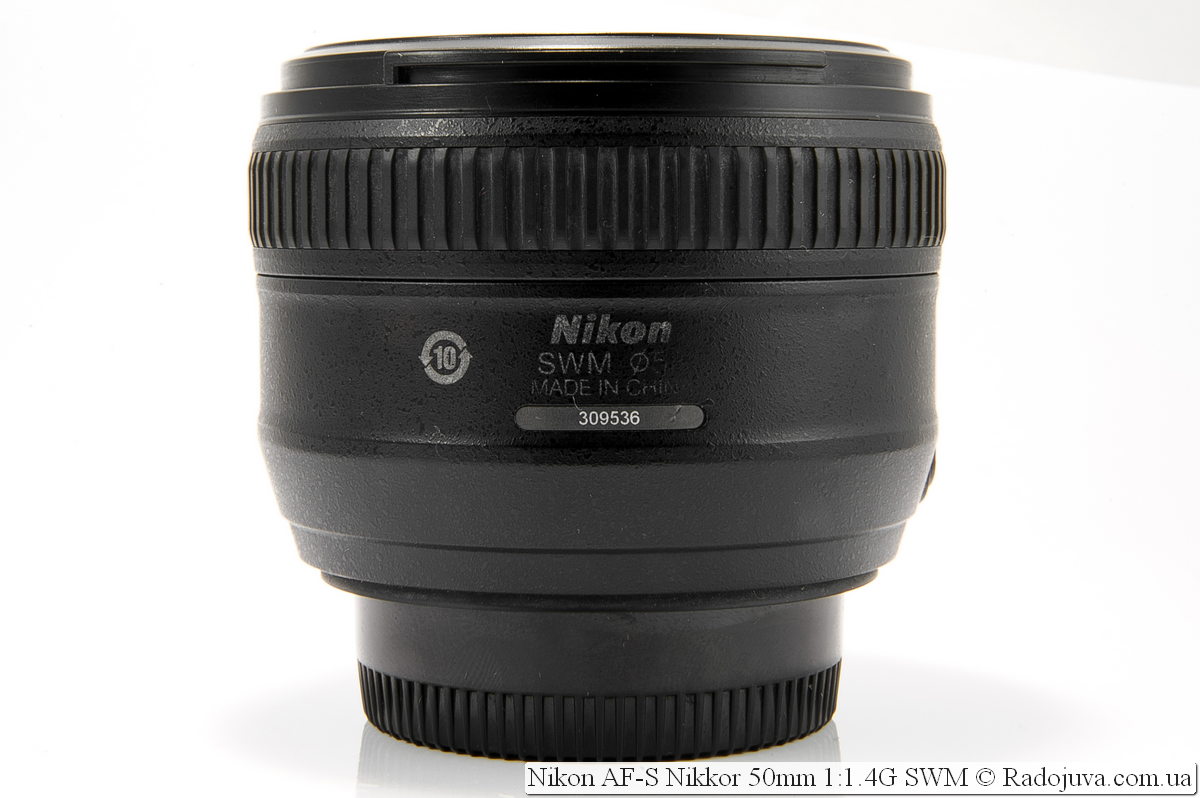
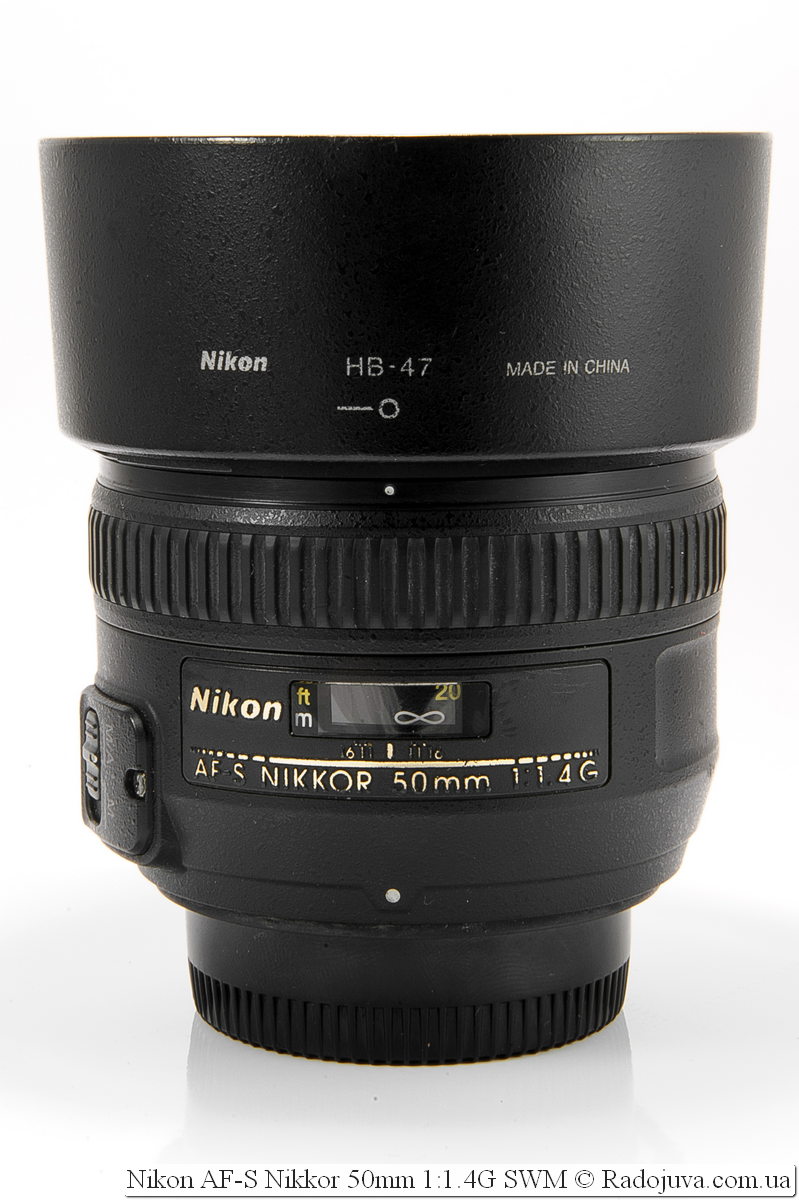
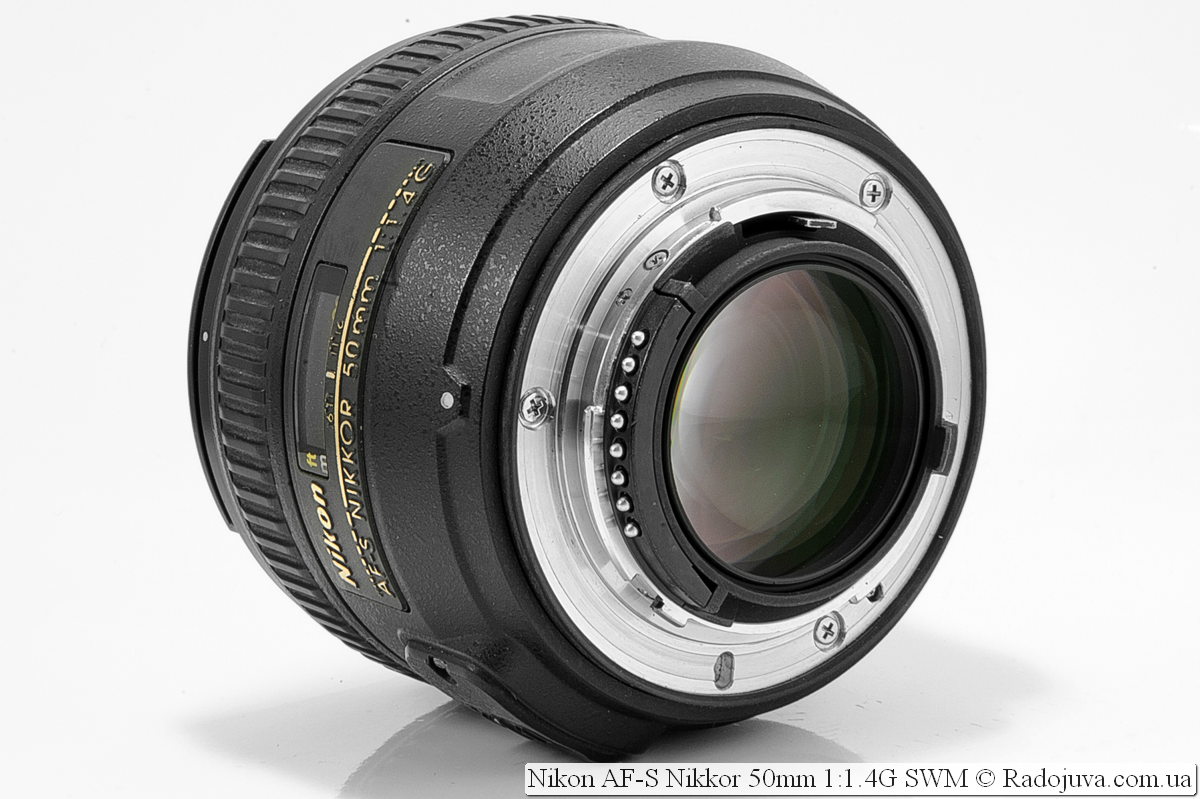
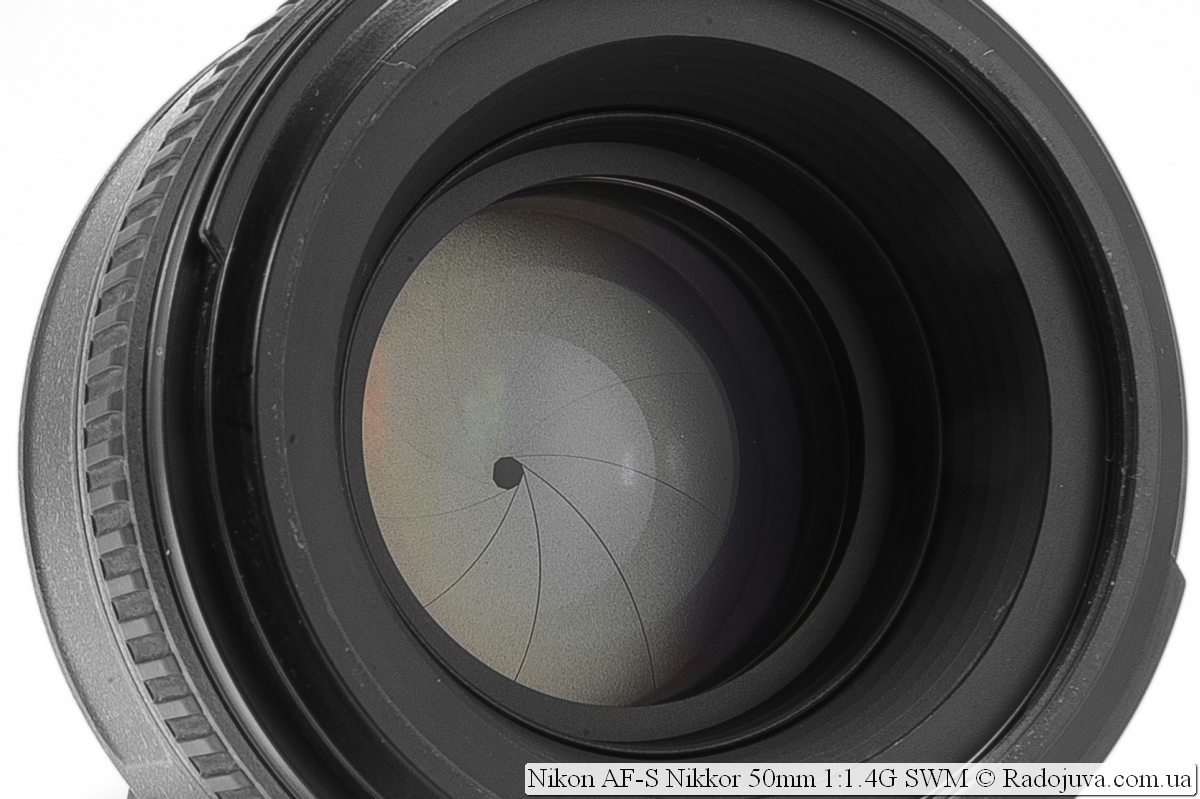
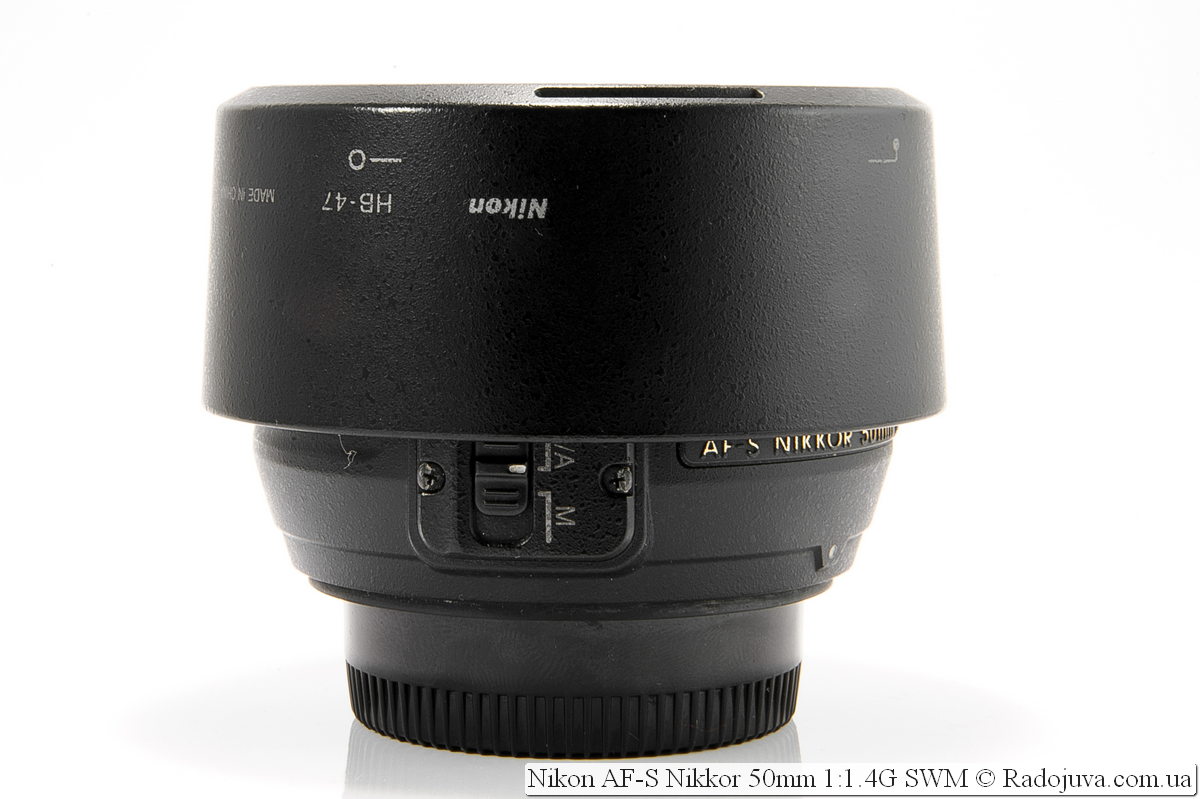


































































Dear Arkady! I don't remember what topic I wrote to you, so I will repeat. Thank you very much for the site. Previously, everything was simple, pressed a button and you're done ... Now it's more fun! I read everything from cover to cover and decided to develop further. I bought a 910 flash (I have a 3200 carcass), yesterday here is a 50 f1.8 lens ... Immediately it stopped working! The number of adjustable parameters has increased significantly! But it's fun !!! In a day, the batteries fly out! It's good that it's not film! The wife is really tired of posing! But the lens itself gave ... well, that's not the point. My proposal for 3200 is valid. If you are interested, I will send you for a test (of course, sending at my expense is the least that I can do for you for your work). If you have a desire to answer, pliz to the mail gasisha@ukr.net .
Thanks. I wrote it to you.
Good day! Tell me, please, can I put a polarizing filter on the Nikon 50mm f / 1.4D lens? Does the front end not rotate on it? Thanks!
You can bet, does not cross.
Arkady, please help me figure out this new lens! Today I bought a Nikkor 50mm f / 1.4G AF-S for Nikon D7000, I can't figure out why the aperture is not set at all on the camera, the shutter speed is only in manual mode M, and there is no auto focus, maybe I didn't switch something, what should be done, what should I do? Help out ...
Make sure that we are talking about the AF-S 50mm G 1.4, if this is this lens, then try to disconnect the lens from the camera a couple of times and reconnect.
yes, thank you, I still trusted the lens to the end, twirled it tightly and heard the broomstick, after which everything worked. it happens…)
Marina, if you want to throw off a couple of photos from your "fifty dollars", email me kulik.den5@gmail.com.. I have this lens with the D7000 for quite some time. This is an interesting bunch of D7000 + 50mmf1,4G. It is interesting to see (and can share) photos from this pair of cameras and lenses.
Denis, good time of day.
I went to this site by accident, read it, saw your comment.
You can hear from you how a person who works in this bunch for a sufficient time. How are your impressions (I have a whale 18-105), expectations have been met? And if it is possible what settings in your opinion (room, street, flash (it is clear that the landscape, portrait, etc., but I want it too much)) are most acceptable?
PS: I bought a camera d 7000 + 18-105 (whale) at the beginning of 2012, I wanted to do it (the experience was only: Fed, Zenit, digital. Soap box), but the divorce and all the ensuing from it, postponed the acquaintance to this day, now new pasia requires portraits, etc.
Until this moment, I took a max of 300 shots.
If you wrote a lot of water, I'm sorry, so far the soul is not in place, so a big request, either ignore or help with advice, just do not scold.
If you can write in a personal.
This 50mm f 1,4 G lens can easily serve as an excellent educational start and starting point, it is the golden mean (but not an ideal case) in so many parameters. So you will feel what aperture 1,4 is, what is the average focusing speed, notice what geometric distortions of the face are in a large-scale portrait, and much more. After using this lens, it will be easier to determine what you need for further use at a wide angle and from longer telephoto optics. For reporting, it will most likely attract faster aperture focusing zooms; for a portrait, most likely 85 mm f1,4 G or 105 mm f / 2,8 G.
It is very important that this lens will teach you how to shoot without a "stub", such hardening will always come in handy.
please tell me (this is our first SLR), my friends advised me to shoot animals in motion with the NIKON D80 BODY and the AF-S NIKKOR 50mm f / 1.4G lens. Is this the best option? thanks
For shooting animals in motion, the Nikkor 50mm f / 1,4G is not entirely suitable due to slow focusing; Nikkor 50 mm f / 1,8G is more suitable.
Please tell me, but there is somewhere a page where you can buy a used lens and camera. Maybe forum users are selling?
Maybe someone is interested - on Nikkor 50 mm f / 1,4 the sharpest pictures are obtained at apertures: 2,8; 4; 5,6. If you need to get a mega-quality portrait (of a bride for example), then you need a Nikkor 85 mm f / 1,4.
A question to Denis why Nikkor 85 mm f / 1,4 is so killing. against Nikkor 50 mm f / 1,4 ... ... what happens on the way out, concretize pliz ... ... if it doesn't make it difficult to skinte a sample photo on soap psk_masters@bk.ru… .Then I can personally evaluate the picture. And at what aperture you get mega-quality.
With all due respect, namesake. But damn, how can you compare glass with such a price ratio .. 13.000r against 65.000 ?????
Hello! Recently acquired a Nikon D5100 camera with an 18-105 lens.
Then I acquired a flash of 700, now I want to buy a fifty dollars. The question arose about choosing the Nikon AF-S 50mm f / 1.4G and the Nikon 50mm f / 1.8G AF-S Nikkor. I myself am not a professional, just just starting to learn. I shoot mostly animals only. What do you recommend buying?
Thank you in advance!
50 1.8zh, good, inexpensive, not much inferior to 1.4zh, it certainly focuses faster.
Arkady really liked your review, thank you very much.
Arkady, if the choice is AF-S 50mm 1.4G and Sigma 50mm f / 1.4 EX DG HSM, which one do you think would be preferable? for the same money ... and why.
Well, nobody tried both Sigma and Nikkor?
Sigma seems to be more expensive ... Isn't it? In general, half a dozen (no matter whose) are not the most “tasty” lenses. I would not focus on fifty dollars, 85 is a great start to a career! :)))
The author has great and sincere appreciation for everything that he does. This is the best site on the topic of photography of all I have visited, and I visited a lot. I will recommend it to friends.
Arkady, please tell me ... which lens to buy? I want to shoot children, portraits, weddings, etc. Nikon 50mm or Nikon 50mm f / 1.8G
Arkady, please tell me ... which lens to buy? I want to shoot children, portraits, weddings, etc. Nikon 50mm f / 1.4G or Nikon 50mm f / 1.8G AF
On the one hand, with fifty rubles for the indicated desired types of shooting, Vyacheslav will have a little “hands tied”, and on the other hand, having used any of these fifty rubles, you will understand which lens is needed specifically for your shooting. Perhaps (most likely) after fifty dollars you will take a zoom lens :). Fifty, while remaining a universal lens (but not highly specialized), allows you to get a good practical training base.
I completely forgot the main thing, a tripod for fifty dollars is very desirable - it is better to shoot full-length portraits and groups of people from a tripod and everything that is further, say 5 meters, also from a tripod. Or the shutter speed must be greatly shortened, which is not always possible due to underexposure of the picture. In general, a tripod is a photographer's best friend :).
Arkady, please tell me. I want to take 50 / 1.4G for the D7000. I need to shoot a wedding. Please specify how long it focuses. And is it possible to take full-length photographs for them? (Even though he is a portrait painter. I know that I contradict myself))) thanks in advance.
Christina, it's slow, very slow ... I myself use it on the D7000, or rather, I hardly ever use it on wedding photography. When shooting “dynamics” with this fifty kopeck piece, the “useful” resource of the camera shutter drops sharply, because you have to shoot in a series and choose the sharpest pictures. Full-length shots: tripod required (use 5,6 aperture - the sharpest for this lens). Many wedding photographers use this fifty dollars on a full frame.
Good afternoon. Please advise which fixed aperture (50 or 85, D or G) to buy in addition to the existing zoom Nikkor 24-70 \ 2.8 and 70-200 \ 2.8, Nikon D3 box. The task is weddings, studio. If you do not look at the cost, only quality, picture, reliability, versatility, liquidity, then what? I am planning to buy a D800 box, which of my zooms is better for it, and which one for 800. Thank you.
Vyacheslav, I personally don’t have such zooms :)), but with such zooms you don’t really need a fifty dollars, but I think it’s not a bad idea. In general, for portraits of Nikon released a special (namely portrait) Nikkor 85mm f / 105D AF DC-NIKKOR. I don’t know why those who are interested in portrait photos pay little attention to this lens?
please tell me because I can't find the answer anywhere ... if you compare 2 lenses for a portrait Nikkor 85mm f / 1.8G AF-S and Nikkor 50mm f / 1.4G AF-S which lens will blur the background more ??? I suppose that Nikkor 85mm f / 1.8G AF-S, although it has less aperture, will blur the background more due to focal melting, am I right ????
I join the question. Is it worth changing 50 MM to 85 MM ??? rather, is there a big difference in picture quality, sharpness, bokeh, etc. for a amateur, not a professional?
Arkady hello! I choose from two lenses, I have already re-read a bunch of reviews and in complete confusion! I choose between Nikon Nikkor Af-s 50 MM F / 1.4 G and Nikkor Af-s DX 35 MM F / 1,8 G I will use them on nikon d5000 I have been using it for about 3 years but I didn’t go into auto mode, I just started to study other modes , but I think I will quickly master them ... which lens would you recommend for a beginner?
Good afternoon. I am a beginner, I use d5100, after reading the article I found myself in some confusion, confusion. I turned my attention to Nikon 50mm F1.4G as a portrait lens. Please advise if my choice is correct?
Please tell me, is the Nikon 50mm F1.4G suitable for the Nikon D 3100 carcass?
Yes, it does.